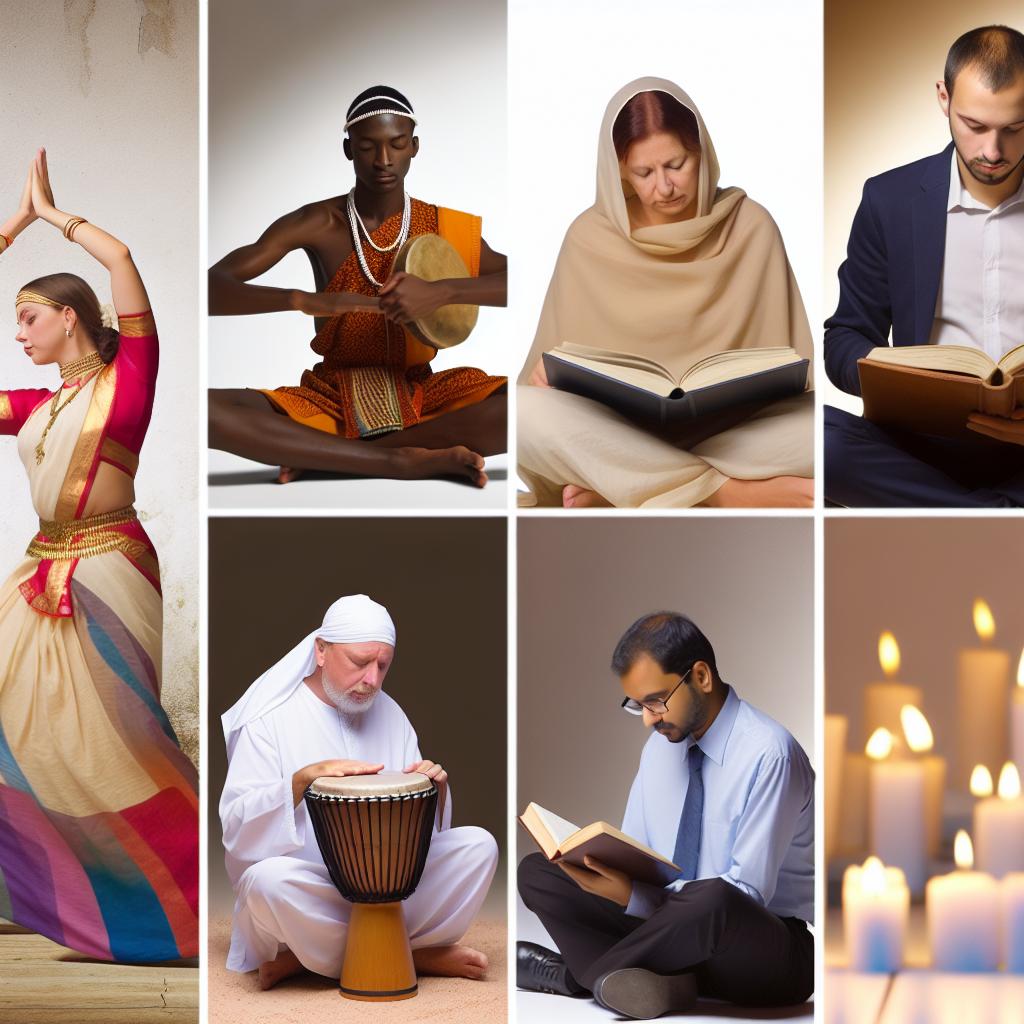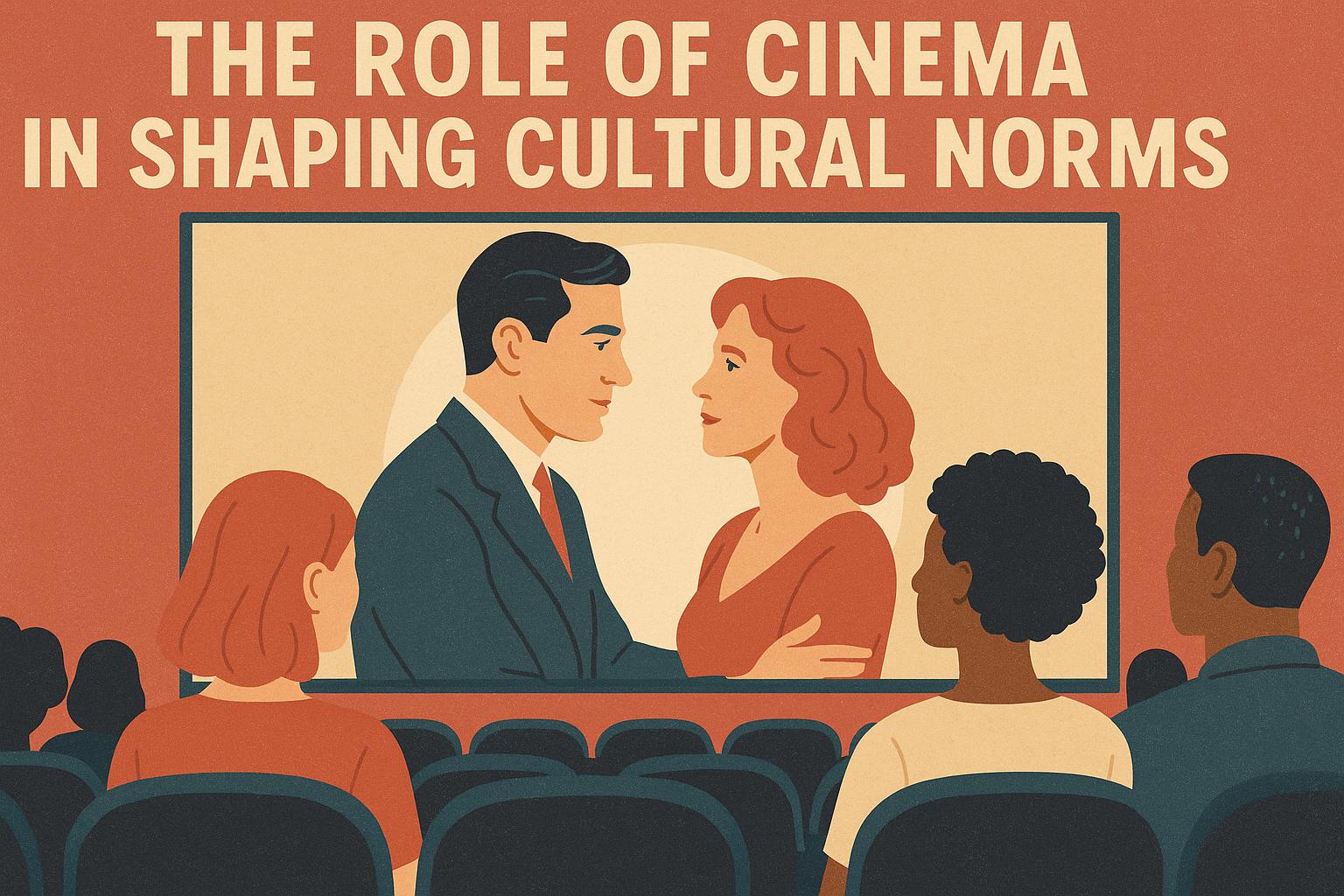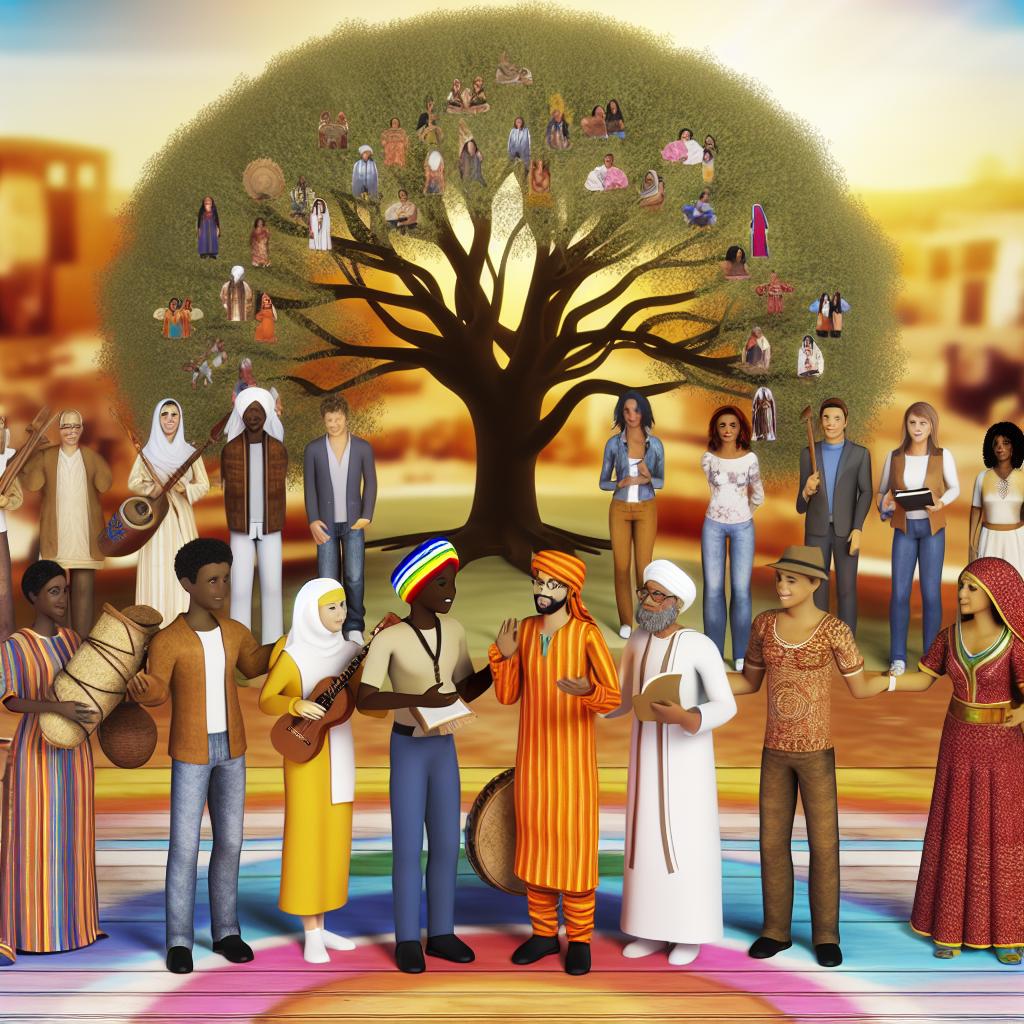Introduction
Religion and cultural expression are deeply intertwined elements of human societies. Throughout history, religious beliefs and practices have significantly shaped cultural identity, influencing art, music, literature, architecture, and social structures. This complex interplay is evident in how different cultures around the world express their religious beliefs through various forms of cultural expression.
Religious Influence on Art and Architecture
Art and architecture are prominent forms of cultural expression influenced by religion. Many religious traditions utilize visual symbols, motifs, and structures to convey spiritual concepts and narratives.
Medieval Christian Impact
One striking example is medieval Christian architecture, such as Gothic cathedrals. These structures often feature extensive use of religious iconography, stained glass windows, and ornate carvings that narrate biblical stories and themes. The grandeur and verticality of these cathedrals were not only architectural feats but also symbolic, drawing the eyes and spirit upwards, towards the heavens. Through their immense size, intricate design, and majestic atmosphere, these spaces were meant to inspire awe and reverence.
Islamic Architectural Style
Islamic architecture is characterized by its own unique elements such as intricate geometric patterns, calligraphy, and decorative arabesques. The emphasis on such elements reflects the religion’s focus on unity and order. Mosques often feature large domes and minarets, symbols of the infinite and the transcendental. The incorporation of vast courtyards and water features in mosque designs, like those seen in the Alhambra or the Great Mosque of Mecca, further highlight the integration of architectural beauty with spiritual function.
Buddhist and Hindu Temples
Religious influence is also vivid in Buddhist and Hindu architecture, showcasing distinctive styles and purposes. Temples like Angkor Wat and the ancient Indian Ajanta caves demonstrate how architectural design accommodates spiritual ritual. These structures often integrate symmetrical layouts and beautifully adorned sanctuaries to embody cosmological symbols and divine principles. Statues and reliefs of deities and sages convey spiritual lessons, with the architecture serving as a bridge between the physical and spiritual worlds.
Religious Themes in Literature
Literature is another cultural domain deeply influenced by religion. Religious texts are foundational to many cultures, providing not only spiritual guidance but also shaping moral and ethical values.
Hindu Epics and Texts
In particular, texts such as the Hindu epic, the *Mahabharata*, address themes of duty, righteousness, and the interplay between temporal and eternal truths. The narrative explores complex stories of dynastic struggle and moral dilemmas, which continue to influence Indian cultural narratives across generations. Indian literature frequently embodies themes of karma and dharma, encouraging readers to ponder their roles and responsibilities in life.
The Bible and Christian Literature
In a similar vein, Christian literature often draws from biblical stories and moral teachings. The Bible itself, containing a myriad of genres from poetry to prophecy, has shaped Western literature for centuries. Many authors incorporate biblical themes, drawing moral and ethical lessons or crafting allegorical stories that reflect Christian doctrine. This tradition can be traced from Dante Alighieri’s “Divine Comedy” to more contemporary works, showing the enduring impact of religious narratives on literary expression.
The Influence of the Quran
Islamic literature also relies heavily on religious context, with the Quran and Hadith forming the basis for numerous literary works. In Islamic culture, poetry is a significant form, with figures like Rumi and Hafez using their verses to contemplate the divine, explore the human soul, and express the believer’s journey toward God. This literary tradition highlights the synthesis of religious devotion with artistic creativity and intellectual thought.
Music as a Form of Worship
Music has long been a medium through which religious and cultural expressions are fostered. Many religious traditions have developed unique forms of music that aid in worship, create a sense of community, and convey spiritual stories.
Christian Hymns and Gospel
In Christianity, music plays a central role in worship. Hymns and gospel music are integral to church services, serving both as expressions of faith and as tools for teaching theological principles. These songs often recount biblical narratives, celebrate the divine, and inspire congregations, functioning as both spiritual practice and cultural expression.
African Spiritual Traditions
Similarly, in various African spiritual traditions, music and rhythm are central to communal rituals. The use of drums, chants, and dances facilitate communication with the spiritual world, and music becomes a medium for storytelling, transferring historical and spiritual knowledge through generations. This communal aspect reinforces a shared cultural identity, deeply tied to religious practices.
Hindu and Buddhist Musical Traditions
Hindu and Buddhist traditions also incorporate music in rituals and religious ceremonies. Bhajans and kirtans in Hinduism are devotional songs that praise deities and encourage spiritual reflection among participants. In Buddhism, chants are used to focus the mind, recite sutras, and meditate. These musical expressions are not merely art forms but elements of spiritual discipline and enlightenment.
Cultural Festivals and Religious Practices
Cultural festivals often reflect the religious underpinnings of a community, serving as public expressions of religious beliefs and communal values.
Hindu Festivals
Take, for example, the Hindu festival of Diwali, celebrated with lights, fireworks, and prayers. This event symbolizes the victory of light over darkness and knowledge over ignorance, reflecting underlying religious narratives. It fosters a sense of unity among participants as they collectively celebrate a shared heritage and spiritual victory.
Christian Festivals
Likewise, Christian festivals such as Christmas and Easter are celebrated globally, commemorating significant events in the life of Jesus Christ. These occasions focus on themes of hope, redemption, and divine love by engaging communities in religious ceremonies, family gatherings, and exchange of gifts, strengthening social bonds and cultural continuity.
Islamic Festivals
In Islam, festivals such as Eid al-Fitr and Eid al-Adha underscore themes of charity, community, and gratitude. They include rituals of communal prayer, charity giving, and festive meals, thereby reinforcing social cohesion and religious devotion.
Conclusion
The relationship between religion and cultural expression is complex and multifaceted, with religion serving as both a source and a subject of cultural creativity. It continues to shape cultural identities, fostering a diverse range of artistic, literary, and musical traditions that enrich human societies. Understanding this relationship enhances our appreciation of the cultural tapestry of the world and the ways in which religious beliefs continue to inspire and inform cultural practices. Through the profound influence on art, literature, music, and festivals, religion leaves an indelible mark on the cultural narratives of human life. As societies evolve, the dialogue between religion and cultural expression remains a vibrant and dynamic area, illustrating the enduring power of spirituality in shaping collective human experiences.



